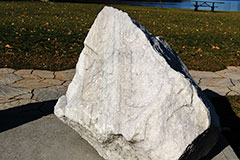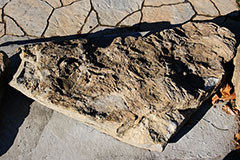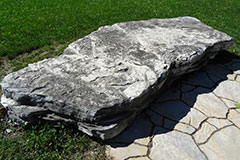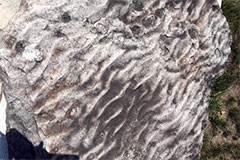Note the faint striations on the flat surface of this display rock. What could they be?
Please refer to Display Rock #19 for information on dolostones.

Photo by Brent Eades.
Display rock 21 is sedimentary dolostone. Run your fingers along the top surface of this block.
This rock was excavated during site preparation for the construction of a house. When it was moved across town to Metcalfe Geoheritage Park, the surface was nearly glass-top smooth. Parallel rows of narrow, shallow grooves were also a prominent feature. These marks are quite recent compared to the Ordovician age of the rock.
During the last ice age, up to about 12,000 years ago, our area was covered by an immensely thick glacier which slowly moved over the bedrock. As the ice advanced over the landscape it created a smooth finish known as glacial polish. Striations were also scratched or gouged on the rock surface by rock fragments that were frozen into the bottom of the glacier.
In less than a dozen years much of the glacial polish on this display rock has been lost to weathering, and the striations are no longer obvious.
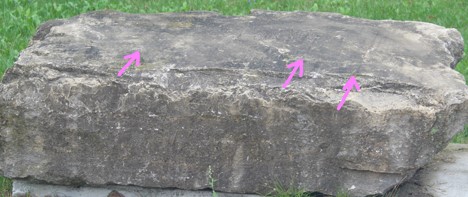
Photo by Julie Lantos.
Direction of glacial striations.
What is weathering?
Weathering breaks down and loosens the surface minerals of rock so they can be transported away by agents of erosion such as water, wind and ice. There are two types of weathering: mechanical and chemical. Mechanical weathering is the physical disintegration of rock into smaller and smaller fragments. Chemical weathering transforms the original material into a substance with a different composition and different physical characteristics.
Limestones and dolostones are especially susceptible to chemical weathering, as slightly acidic rainwater reacts with mineral grains in the rock to form soluble salts.

